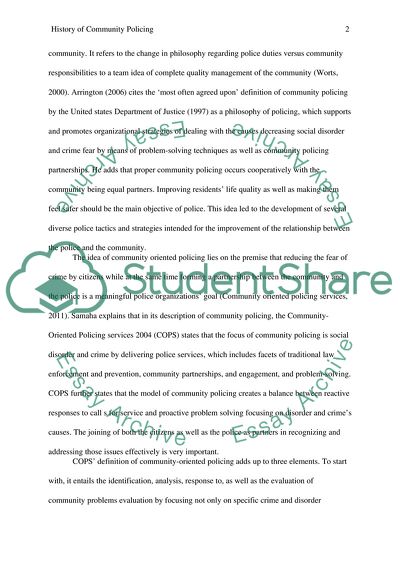Cite this document
(“History of Community Policing Research Paper Example | Topics and Well Written Essays - 2500 words - 1”, n.d.)
History of Community Policing Research Paper Example | Topics and Well Written Essays - 2500 words - 1. Retrieved from https://studentshare.org/social-science/1750911-history-of-community-policing
History of Community Policing Research Paper Example | Topics and Well Written Essays - 2500 words - 1. Retrieved from https://studentshare.org/social-science/1750911-history-of-community-policing
(History of Community Policing Research Paper Example | Topics and Well Written Essays - 2500 Words - 1)
History of Community Policing Research Paper Example | Topics and Well Written Essays - 2500 Words - 1. https://studentshare.org/social-science/1750911-history-of-community-policing.
History of Community Policing Research Paper Example | Topics and Well Written Essays - 2500 Words - 1. https://studentshare.org/social-science/1750911-history-of-community-policing.
“History of Community Policing Research Paper Example | Topics and Well Written Essays - 2500 Words - 1”, n.d. https://studentshare.org/social-science/1750911-history-of-community-policing.


